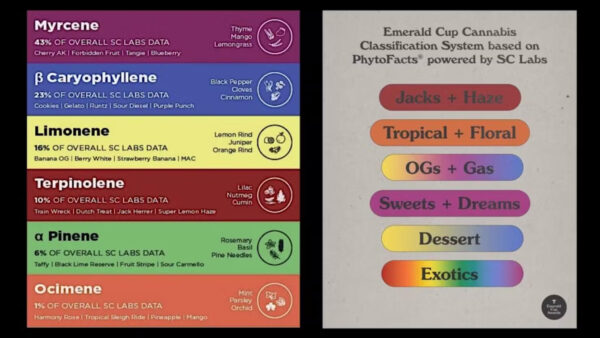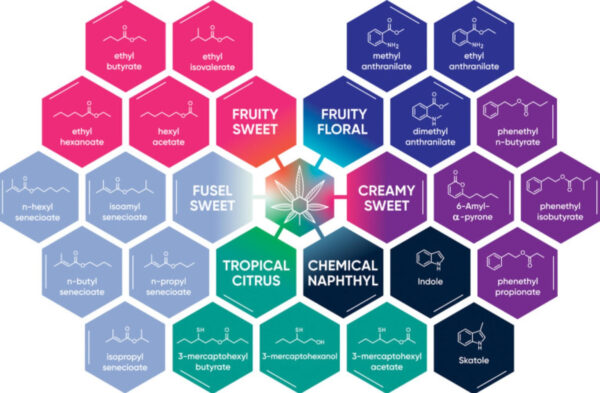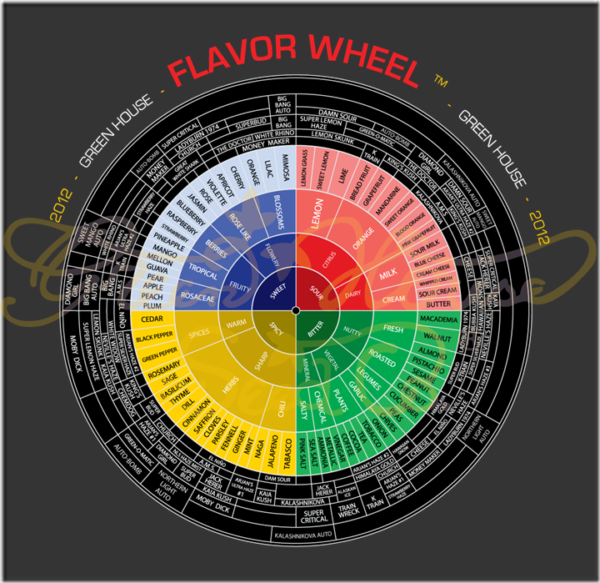It’s testing times for cannabis! A head cannabis tester job is up for grabs, and we show you how to assess, classify and test your summer stash of cannabis, this week on 95bFM’s Marijuana Media with Chris Fowlie from NORML and Jonny from bFM Drive. It’s the last show of the year – thanks to The Hempstore!
[Stream the pot-cast on 95bFM.com] [RSS feed for podcast apps] [download mp3]
Wanted: Head cannabis tester
South Island medical cannabis company Aether Pacific Pharmaceuticals (formerly Medical Kiwi) – who had a stall at Auckland J Day recently, and will soon begin a trial of cannabis in rest homes for pain and sleep – are looking to hire a “head cannabis tester”.
Their ad on Seek says the full-time quality control position pays $55/hour and, according a report in the Herald, the company says the job is “pretty scientific”.

An article in the Herald last Monday asked: “Are you a budding scientist? Could you make this role your own?” The job attrached 700 applicants in 48 hours after being posted online, but no inhaling is involved.
Appearing on Newshub’s AM show in a room of cannabis plants, Medical Kiwi’s Global Relations Manager Jason Whitelaw said “It’s certainly not a smoking position”. Perhaps the successful applicant would employ a “metabiophysical assay” (i.e. sniffing it).
So why would a company need a cannabis tester? For cultivators a person with an exceptional nose could be useful hunting for phenotypes of new lines that would be more desired by patients and in export makets; they could be assessing product samples before investing funds in inventory that may or may not sell; metabiophysical assays are cheaper and quicker than lab tests; and of course there is the free publicity. Aether Pacific is currently undertaking a capital raise.
Medical cannabis sales
Figures released under the Official Information Act to Rua Biosciences, and obtained by Marijuana Media, show New Zealand imported a total of 1329 kg of medicinal cannabis flower from 1 Jan 2022 to 30 September 2023.
The Herald stock takes last week reported Rua is “exploring alternative supply partnerships” after Aussie’s Cann Group gave 12 months’ notice to terminate its contract to provide Rua-branded flower. Showing the importance of testing and quality control, Rua said there had been “recent quality issues with Cann’s export products.”
For producers the testing and assessing of cannabis, especially medicine, requires expensive lab tests for active ingredients, shelf life and stability, and contaminants such as heavy metals, microbes and pesticides (I co-authored a paper about it, here).
For consumers it is more about sniffing and looking at cannabis samples and going by strain names and recommendations of the provider. But here in New Zealand we have illicit market for adult use and a highly regulated market for medical which prohibits marketing and greatly inhibits the sharing of information. Patients are told only the levels of THC and CBD and some often-meaningless product name.
Not surprisingly, there is a lot of confusion our there. Like, what strain is Dune or Arroyo? Is “GG4” an abbreviation of Gorilla Glue, and what is that anyway? And why does it matter?
Categorising cannabis
A new cannabis classification system promises to end the confusion and make strain selection easier for patients and consumers. Strain names are an incredibly effective marketing tool, but they don’t do much to help people discern how any given product will affect them. Even the terms indica and sativa are problematic and misunderstood.
Cannabis is not binary. Short doesn’t mean indica, narrow leaves don’t necessarily mean it’s a sativa, and the THC level doesn’t tell you everything. It’s now thought all cannabis is sativa, and among the drug varieties are cannabis sativa subsp indica, americana, chinensis, and perhaps others, with European hemp being cannabis sativa sativa.
They can all be high in THC or low in THC, and high or low in other cannabinoids or other useful compounds such as terpenes – and it is those levels and ratios which determine the usefulness of any given sample.
That’s why a so-called Sativa and a so-called Indica can both be high in THC but have vastly different effects (It’s also why some patients report that imported medicinal cannabis products which have been irradiated and have lower levels of terpenes leave them feeling unsatisfied.
So science came up with Type I, II, III, IV and V cannabis. The concept was introduced in a 1973 paper by Ernest Small and H.D. Beckstead published in Nature:
- Type I – THC-dominant with a concentration of >0.3% and CBD content of <0.5%.
- Type II – a mixed ratio profile with CBD and THC in varying moderate concentrations.
- Type III – CBD-dominant with low THC content that provides little to no intoxication.
- Type IV – low levels of THC but with potent percentages of CBGA (cannabigerol-acid).
- Type IV – little to no cannabinoid content (cannabinoid-null or -zero).
However, “I’ll have some Type I, thanks” doesn’t distinguish between the thousands of high THC strains, terpene profiles or entourage effects.
Earlier this year, researchers at the University of New Mexico said they had developed a new system for labelling cannabis flower, which they say is more useful to consumers than relying on strain names or commercial labels.
The Vigil Index of Cannabis Chemovars (VICC) is a four-character chemovar code that broadly describes the primary and secondary terpene levels, as well as THC and CBD levels, in a sample of cannabis flower.
The index code for a chemovar containing high levels of terpinolene, lower levels of limonene, 20% THC and no CBD would be “T+L60”. Obviously!
This complicated, convoluted system is ok for pot geeks like me but for most people it would be next to useless.
So, I think we should turn to the Emerald Cup Cannabis Classification System based on PhytoFacts powered by SC Labs. It’s a long-winded name for a new, commonsense system.

Introduced for the 2022 competition, it moves away from the fixation with THC and more towards how legacy growers and consumers already describe cannabis in the ways they use it.
That is the sniff test. Products are categorised based on the dominant terpenes.
The six classifications are, in order of popularity:
Desserts
“This is where all your Runtz, Gelatos, GSC, Sherberts, Biscottis, Wedding Cakes and other hit strains tend to live”, according to Leafly. These sought-after flavours are of desserts, doughs, citrus and spice. They’re loud, stimulating, racy, uplifting, comforting. Dominant terpenes are caryophyllene and limonene. Often said to be zaza (rare & exotic) but this category is now 50% or more of dispensary sales in legal places, so not that exotic.
OGs + Gas
Varietals such as OG Kush, Chemdog, Sour Diesel, Gorilla Glue, often termed as ‘Hybrids’. Like throwback hip hop, popular back in the day. You can’t go wrong with Kush and Sours. Flavours are gas, fuel, sweet, citrus, and pepper. With dominant terpenes caryophyllene, limonene and myrcene the effects are uplifting, stimulating, analgesia and relaxation. Now 20% of sales in legal markets.
Sweets + Dreams
This group includes Blue Dream, Tangie, Grandaddy Purps, Purple Urkel & Grape Ape, usually thought of as Indicas. Super popular in the 2010’s. Tasting notes are fruity, sweet, woody, hoppy, herbaceous. With dominant terpenes of myrcene, pinene and caryophyllene, the effects are relaxation, couch lock, pain relief. The R&B of weed, according to Leafly, for when “it’s time to relax after a long day, or cuddle close with your significant other”. 15% of sales in legal places this year.
Tropical + Floral
A “bunch of weird sativas”, according to Leafly, such as Super Skunk, Hawaiian, Mango, Green Crack, Dutch Treat and Dream Queen. Sweet, floral, tropical fruit tastes and calming, soothing and relaxing effects from the defining terpenes ocimene and myrcene. Leafly says if this was a music genre, it would be EDM. 10% of the market in legal places.
Jacks + Haze
These are so-called ‘Sativas’ such as Trainwreck, Jack Herer, Durban Poison, Super Lemon Haze. Leafly calls these “your classic Dad Rock strains” Typically energizing, cerebral and artistically inspiring, the tasting notes are fruity, pinesol, haze coming from terpenes like terpinolene, caryophyllene and myrcene. According to Leafly this category is “home to the only true sativa strains left in existence. Protect the classics!” These account for just 5% of sales in legal places.
Exotics (Rare Terpene Combinations)
These are true ‘Hybrid’ varietals, “the real weirdos of the club”, this is weed high in farnecene, borniol, geraniol, trans-nerolidol, humulene, carene, valencene, and eucalyptol. Under 1% of sales – if any, at all.

Oswald et at – Figure 5 Schematic highlighting key volatile compounds that produce specific aromas in cannabis
But wait. A new study has found terpenes aren’t all they’re said to be, finding other minor, nonterpenoid volatile compounds drive the aroma differences of exotic cannabis. We may need a new classification system!
Running from 2006 to 2012, the Auckland Cannabis Cups were judged on Smell, Looks, Flavour and Effect. We encouraged judges to narrow their selection by first considering aroma, appearance and texture before moving on to actually trying any. I gave judges the following guidance:
Judging and Inspecting Quality Cannabis
The following tests may be used to objectively judge and inspect strains of marijuana without necessarily getting high. Ultimately, the decision is yours as the most important criteria are entirely subjective – the potency of the hash or marijuana, and the nature of its effects. Enjoy!
Trichomes: Use a loupe or magnifying glass to count and compare the ‘crystals’. What proportion of stalks actually have gland heads? Compare the length of trichome stalks vs. size of gland head. Sativas have more & smaller trichomes, indicas have fewer, larger trichomes. Smaller (younger) trichomes have proportionally more THC:CBD than larger (older) trichomes on the same plant
Smell/taste Crush or use a grinder to reveal the true smell. Four main smell groups:
- Sweet – floral, fruity (berry, citrus), minty (menthol), sweet (vanilla, bubblegum)
- Spicy – woody (sage, pine, incense), seasonings (pepper, clove, basil), chocolate
- Musky – earthy (loam, dirt, musty, dusty), hay, leaves, animal (gamey, skunky)
- Chemical/astringent – solvents, metallic, ammonia, bleach, etc
Colour Sativas are more green / brown, indicas have more colours
Burn it! Should have white smoke & ash, and it should keep burning. Ash should be smooth. Crackling or hard black ash can mean chemical residues.
As always, trust your nose (use a flavour wheel to help describe the notes, like wine tasting). If this is all a bit much, keep it simple with the old Sativa-Indica binary. It describes the effects (up or down) even if it’s not botanically correct.

Coming up:
- The Hempstore First Thursdays Double Kirihimete Special: on Thurs 21st December at The Hempstore we have SANG Band live and free Terp & Co tastings!
- See you next year! This was the last Marijuana Media show for 2023. We’ll be back in mid-January.
Marijuana Media airs every Thursday at 4:20pm on 95bFM, with your hosts bFM Drive’s Jonny and Chris Fowlie from The Hempstore. Stream or download the pot-cast for this show here or hundreds of previous Marijuana Media shows at 95bFM.com (or via iTunes / RSS feed). Thanks to The Hemp Store!





The Fabulous Furry Freak Brothers and Fat Freddy’s Kat would be very proud.
Gilbert Shelton. Fuck the all blacks ( All bought and paid for.) This guy’s my hero!
https://en.wikipedia.org/wiki/Gilbert_Shelton
countryboy – I too, like the Freak brothers comics…shame about the recent cartoon series